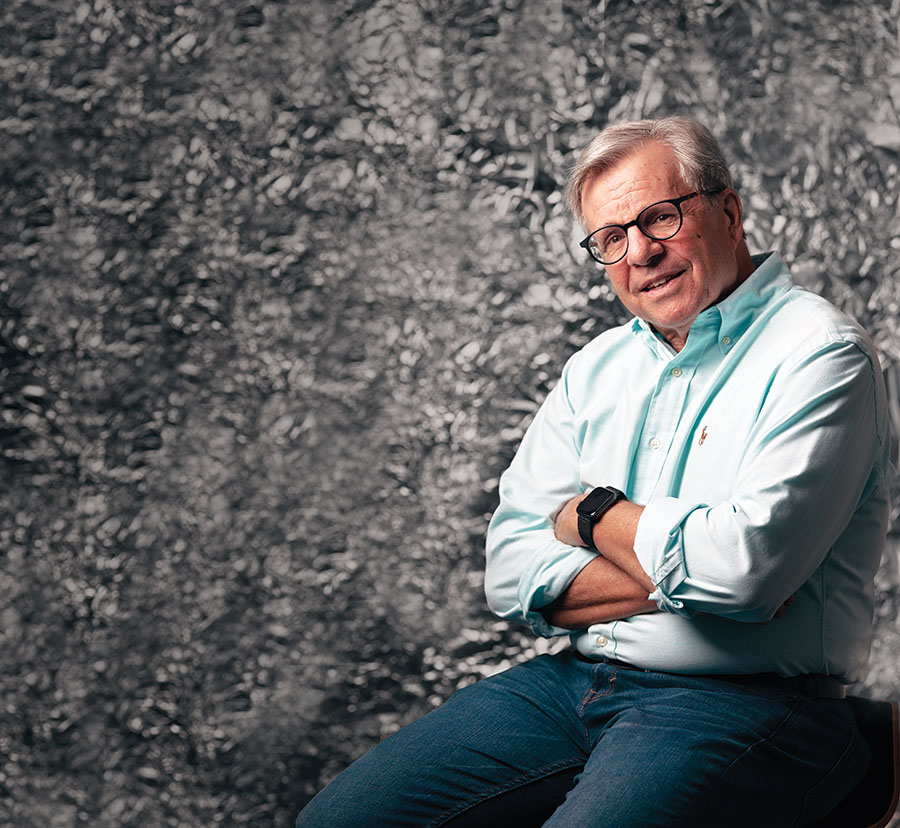The director of the Sarasota County Arts Council, Patricia Caswell, alongside community arts advocate Syd Adler, responded with a bold new idea—a beachfront artist retreat on county land in Englewood. The Hermitage Artist Retreat accepted its first visiting artist in 2003, soon finding its first executive director in Bruce Rodgers, a resident playwright at what was then called the Asolo Theatre Company and the man who would, over the course of 15 years, lead The Hermitage from underdog dream to international incubator. Before retiring his post this December, Rodgers takes his turn in the mirror, looking back on the early
days, the good days and the one big idea that never did come to pass.
How was The Hermitage a response to this strategic plan? Rodgers: The planning process revealed that we, as a community, needed to do more about individual artists making art. We were great at presenting art created in other places, but we weren’t generating art here.
Was there any difficulty getting the county to use the land in such a fashion? They were looking for a not-for-profit partner to do something with it, because the original plan had been to bulldoze those buildings and create a parking lot for the beach. Then they couldn’t because the buildings were historic. It was Patricia’s idea to use this property as an arts community, so she put together a steering committee that she and Syd led. And I was on that steering committee.
What did you think of the idea? Well, I thought it was great. I had just been invited to go up to the panhandle—Seaside has its own arts community project in January and February. That’s their low tourist time, so the people in Seaside who built these architecturally interesting and significant homes donate those homes to the Escape to Create Project. I had been invited to go up there as a playwright and work. Before that, I was a MacDowell Colony Fellow. So I’ve had that experience as an artist, really understanding the benefit of what an arts community can provide to an artist. And that was my role on the steering committee, and then on the board—to represent the artists’ voice and provide information about what the artist needs.
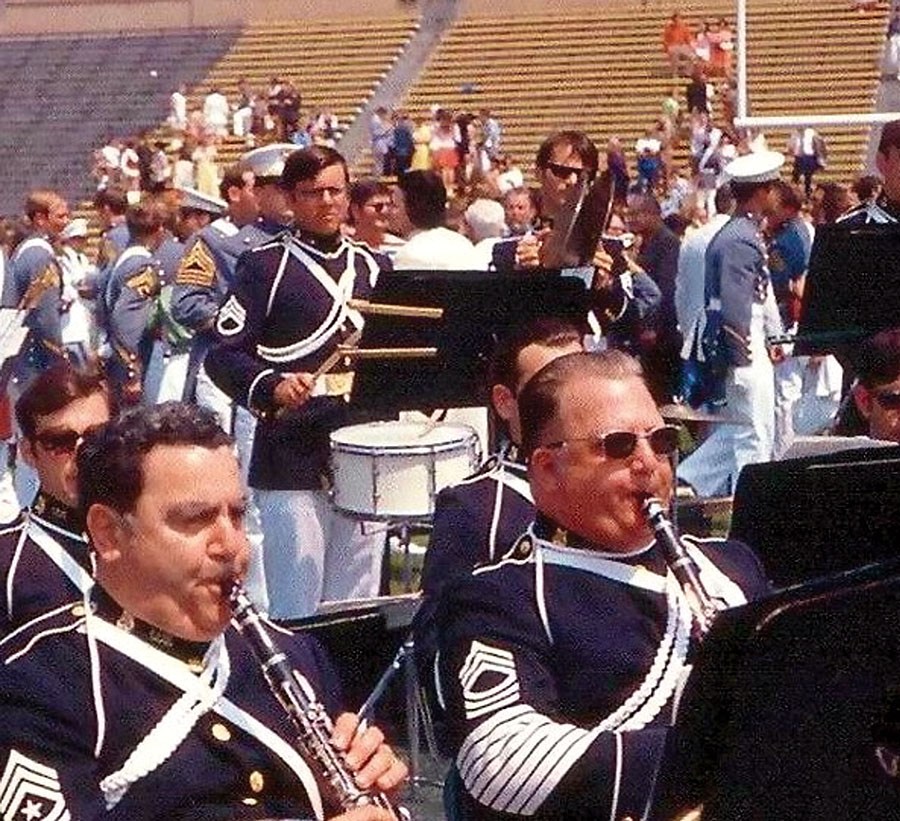
What kind of insights were you able to bring in at these early stages? When I went to the MacDowell Colony, I thought it was about getting away and being by myself and just working. That’s only half of why these things work for artists. The other half is the interaction with the other artists, especially artists from disciplines that are not yours. For me as a playwright, the revelation was having time to talk to visual artists and to poets and to composers, and to create these relationships, which have continued. I still am friends with some of the people I was at MacDowell Colony in 1989. It’s about intense time alone and intense time together.
Prior to this you were resident playwright with Asolo Repertory Theatre for 11 years, why did you want to make that jump? It was a great opportunity to start something for this community that hadn’t been here, to create an organization and an institution that’s going to be enduring beyond my tenure, and serving a part of the cultural community that has not been served—to fill that hole that the cultural plan identified.
But it was also risky, right? It was risky, a very risky opportunity, because the community had not ever even thought about this, and there’s no earned income stream. There are no tickets to sell. There’s no admission. Every other cultural organization in a community, they sell admissions, as a museum or as tickets for the performances. And that defrays about half the operating cost of the organization. This organization doesn’t have any. So, we had to raise all that money every year.
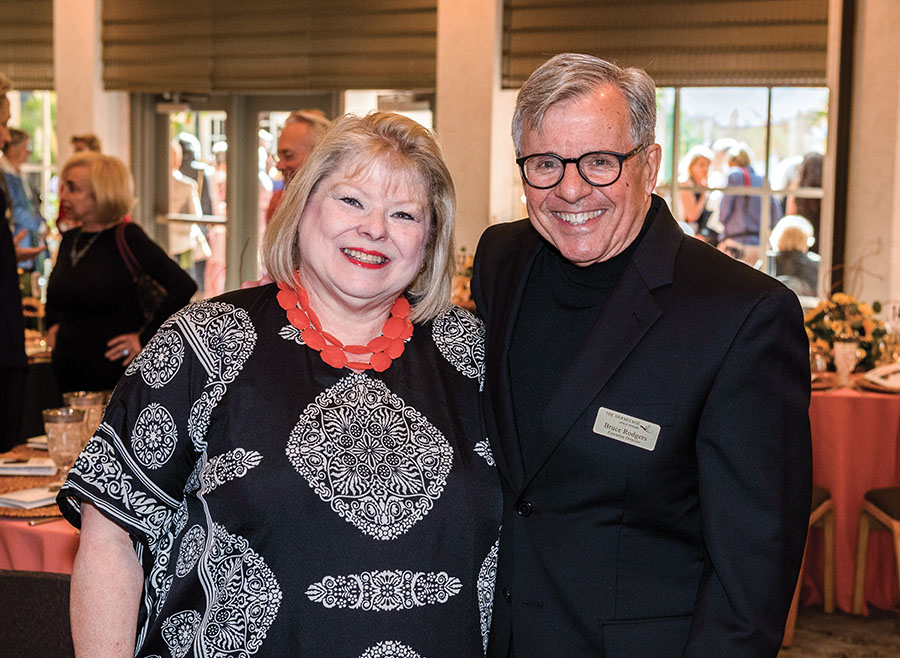
Did you find artistic fulfillment in taking these challenges on? Absolutely. People asked me through the years, “Do you miss writing?” Because I have not been writing, very much at least. And my response has always been that this has been my creative project. This has been the project that I’ve been given the opportunity to make. I’ve taken it on as that, and now I’ve gotten it to a certain place and gotten to a certain age, and it’s, I believe, time to pass that on.
During your tenure, the annual budget went from around $80k in the beginning to now around $700k a year. How did you achieve this level of growth? A couple of different vehicles. One is that it was very important that we connect the artists to the community. While these artists may come from all over the world, if the community doesn’t have some kind of connection to it and doesn’t receive a tangible benefit from them, then it’s very difficult to ask them for support. So all of our artists do free programs throughout the community. Some at the Hermitage, some on the beach, but also in collaboration with almost all the cultural organizations in our community, and in the schools in Charlotte County, Sarasota County and Manatee County. World-class artists are in the community and the community has access to them. There’s a benefit. Support us, and we can do more of them. That has fed on itself, and that’s been super important. The second is building the endowment and then the origination of the Greenfield Prize.
That was in 2008. What kind of impact did that have at the time? When the Greenfield Prize happened, it was the equivalent of about $3.5 million in endowment gifts. It’s a more unusual relationship with a foundation in that it’s a contract in perpetuity. It’s as if they’re holding that $3.5 million and they give us that return that we would have. There’s a great benefit in that we know what we’re going to get. We don’t have to worry about the market. We don’t have to worry about managing those funds. But it’s a significant amount in return for us.
But more than just the money has been the fact that we’re commissioning these major creators to do work, that they come here to make it and it gets exposed here first and goes out into the world. That’s a huge thing that other artist communities are not doing. At Art Basel in Switzerland this year, one of the featuring sculptures was Tin Man for the 21st Century that was created by Coco Fusco. It was on the grounds of the Ringling Museum for four months and is now in the largest and most popular art fair in the world. It was written about all over the world, but created because of Hermitage and the Greenfield Prize.
Martyna Majok, a playwright, wins the Greenfield Prize two years ago. A week later, she wins the Pulitzer Prize. And she’s creating a new work that’ll see its first audience here in Sarasota next April. That’s incredibly significant, and that’s worth supporting.
On a wider level, what does it do for Sarasota when we’re able to originate this art? It goes out into the world and it’s always out there that we started this. So, when Art Basel put out their publicity about Coco’s piece that went around the world, it said it was commissioned by the Greenfield Prize of the Hermitage Artist Retreat in Sarasota, Florida. That name gets associated with it as things happen. I’m walking through the Denver Airport. There’s a book out on display written at the Hermitage, with an acknowledgement saying thank you to the Hermitage. In the New York Times special section about the 50th anniversary of the moon shot, there was a poem published by Natasha Trethewey, Hermitage Artist. The most significant creators are coming here and that work is all around the world.
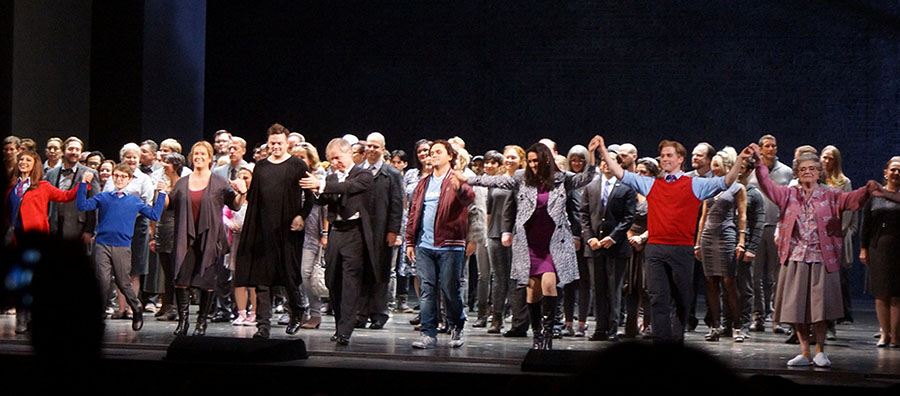
Why is it important that artists must be invited to the Hermitage? We wanted to make it meaningful when you got an invitation to be here. And we wanted to make it intentionally difficult to be here. We want to make it very cool. We want everyone to know about it, and to know that you can’t just get in. And so that when you are invited, that says something about your work and where you are in your career. We’ll be like the MacArthur Grants and the Genius Awards.
Why only five artists at a time? We can do things as a small artist community that the MacDowell Colony and Yaddo Studios can’t do. They serve 30, 50, 100 artists at one time. We can operate in ways that they can’t, and ways that are more artist-centered.
What was the philosophy behind choosing artists to invite? That we’re known by the company we keep. That if those are people of significance, then we become significant by association. And that aligns with all the partnerships that we started creating and with the National Committee that started doing the inviting.
What are some of your proudest moments with the Hermitage? The Greenfield Prize, for sure, and for us to be able to hand a check for $30,000 to an artist and say, “Do what you need to do. This is to commission yourself. We’re not going to tell you what to make. No one’s going to tell you. Do what you need to do, that you wouldn’t have done if you didn’t receive this check.” That’s been fabulous. It’s like an opportunity of a lifetime to be able to do that.
Related to that, seeing some of the work that we’ve been a part of. We went to the MET in 2013 and saw the opera Two Boys by Nico Muhly and Craig Lucas. The only time they worked on that opera in person, in the initial generation, was at the Hermitage. So to go to the MET, to sit in an audience of 3,000 people, and watch this huge opera and be part of the standing ovation? To see Nico come out and take his bow, and then go off into a private room and talk to us about writing this in our little beach, in our little cottage? That was huge.
And the third one was actually the night before that. We had a night of Hermitage artists at Symphony Space in New York City. And we invited all of our artists up to that time to submit brand new three-to-four-minute works of art. 2013 was the 50th anniversary of the Kennedy assassination. And so we made the theme November 21st, The Day Before. Create something that reflects where our society was the day before this assassination occurred, so that we can see what changed the next day. We had 62 artists participate. Many of them collaborated with each other. Nico Muhly wrote a new piece. Craig Lucas wrote a new piece. John Guare wrote a new piece. I wrote a piece. Olympia Dukakis was one of the actors performing. It was an incredible evening, and a reunion.
On the flip side, looking back at 15 years leading the Hermitage, are there any regrets or things not done? Paths you wish you could have taken? The short answer to that is yes and no. I would’ve liked to have been able to create a new music studio, which I think is something that we need, and that’s not going to get done before I leave. But you can’t do everything. One of the great things about our organization is that we’ve had a board that has given the staff great freedom to operate. They supported us. They let us do what we needed to do artistically as an organization. We just didn’t get around to it. And I have another idea—a really huge idea—to build on the Greenfield Prize, which I never had traction for.
Another prize? It was another prize, a global prize. The idea would have been a global prize for collaborators on an international scale, and the collaborators would have to be from opposite sides of conflicts somewhere around the world. High value, million dollar or so prize—the worth that it would take for artists on opposite sides to find each other, to develop a concept together, and the winners come here to make whatever it is they’re making. Travel around the country and tour it here and then tour it in their two countries, in the two factions. We were actually going to have a significant partner in Atlanta to make that happen. That fell through for complicated reasons.
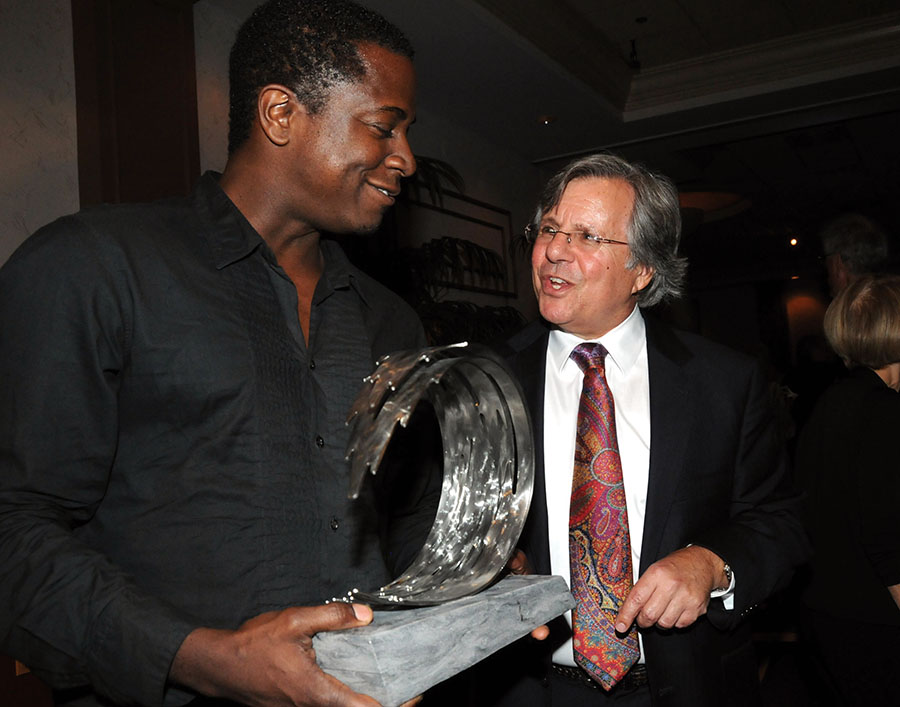
And it never happened? It didn’t happen or hasn’t happened yet, but it’s an idea that would show the opportunities that art has to create rather than to destroy, and to bring people together using ideas, using art to create discussion and connection among different peoples.
If we were to do that cultural study again today, what kind of gaps or holes do you think would be identified? I don’t know. I think it would take the process to figure out what that is. I certainly have seen this cultural community mature over the years, as I’ve matured also. I first came here in ‘91 as a playwright, and what I saw of the artistic and cultural community at that time to where we are now, it’s like night and day.
In a good way, right? In terms of the sophistication, the quality of the work, the organizations, the growth of the organizations. It’s amazing to see. It’s a national story that hasn’t been written yet. Everyone knows about Santa Fe. They all should know about us in the same way. And I don’t think the country does. A lot of people would say that’s fine because we’re full enough.
We’ve got traffic. We’ve got traffic, we’ve got all of this, but one of the reasons why we’re growing the way we’re growing is because of the quality of culture here and the depth of the culture here that is really unprecedented. And the way that it’s supported here.
The Asolo went through incredible financial difficulty the first two years that I was here. We came very close to closing. Within hours of closing. I had the opportunity, through this process of survival, to understand that all of our organizations are only here because the community wants us to be here. The community owns all of these organizations, and they’ve invested hundreds of millions of dollars in these organizations. The community not only attends, but they give, and they give in unprecedented amounts compared to other communities in the country. That’s a part of that national story. They attend and they have high expectations, and the organizations work to live up to the expectations of the community, to deserve the money that they’re going to give them.
Now that you’re going to have the freedom to pursue your own projects, what’s on the docket? I have two plays that are unfinished that I will go back to right away. Probably some screenwriting as well. And prose. I have a lot of things that I’ve been saving. I have a huge pile of letters from my family when they were in and around the Civil War. So, all those letters need to be categorized and cataloged, read. I haven’t read them. There’s a lifetime, right there, of material to write about. I have other things like that I have saved for this next phase in my life. I have plenty of work to do.
Do you think you’ll be invited to stay at the Hermitage to finish these plays? I don’t know. I’m not sure if I can get in or not. I hear it’s tough to get in there.




